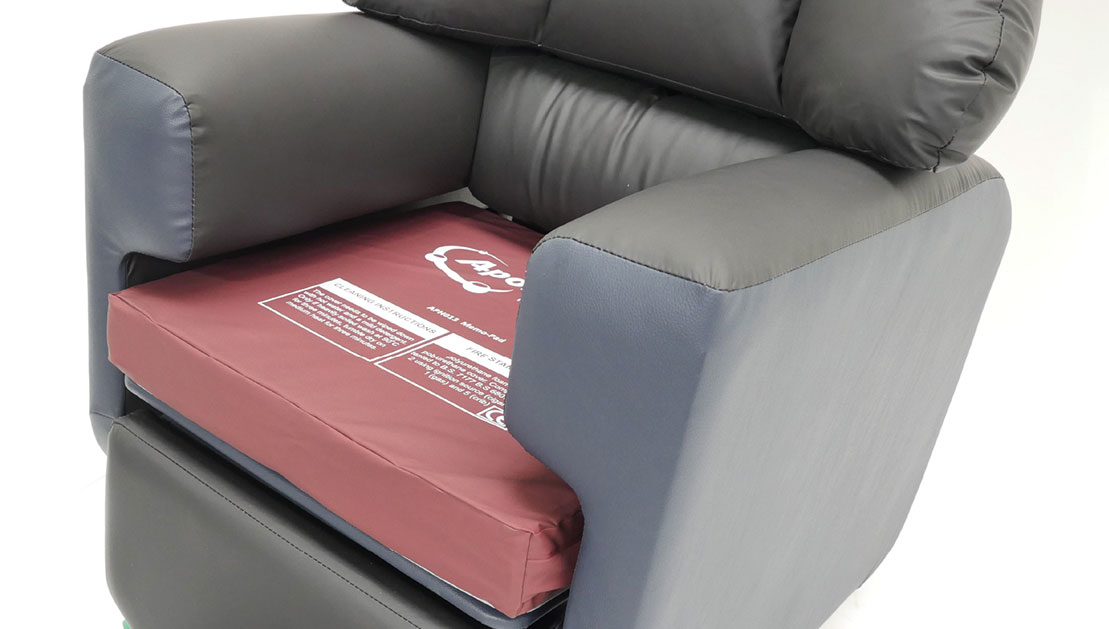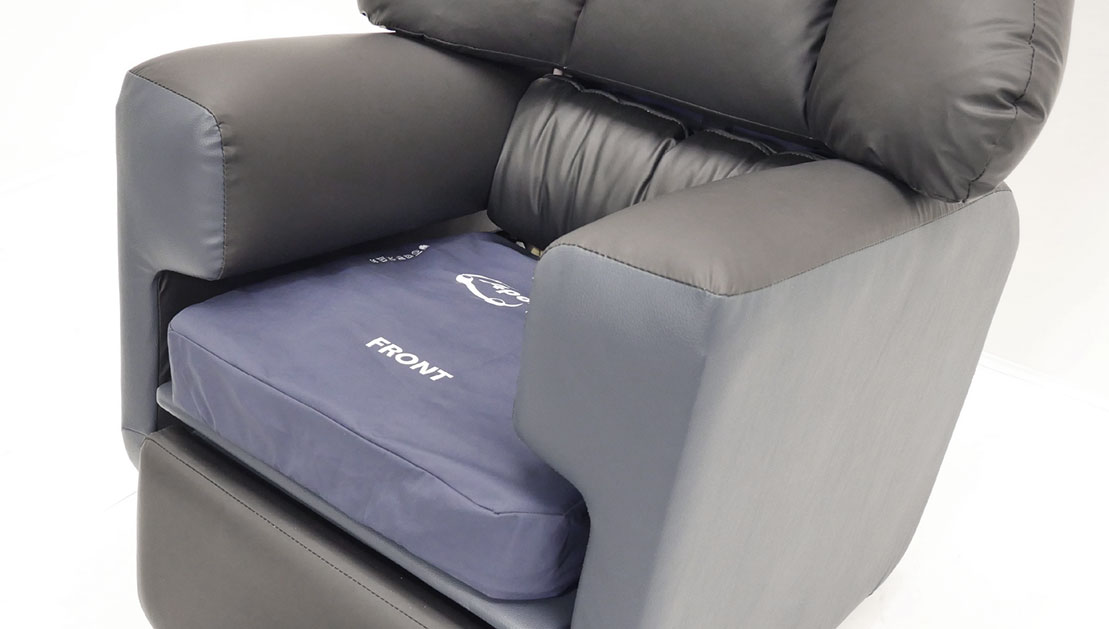for individual users
The comfort, postural support and pressure management provided by the Tri-Chair is what makes this specialist chair standout. Users can be assured that their Tri-Chair has been tailored specifically for their individual needs and has the ability to meet their often-changing requirements.
The Tri-Chair has a range of all encompassing features and benefits that make it the ultimate specialist chair.
Furthermore, tilting the body has the effect of distributing weight over a larger contact surface area providing a simple and effective way to combat the build-up of pressure reducing the risk of pressure sores in vulnerable areas such as the sacrum and ischial tuberosities.
When hoisting, tilt-in-space enables gravity to assist in correct position of the occupant’s pelvis at the back of the chair.
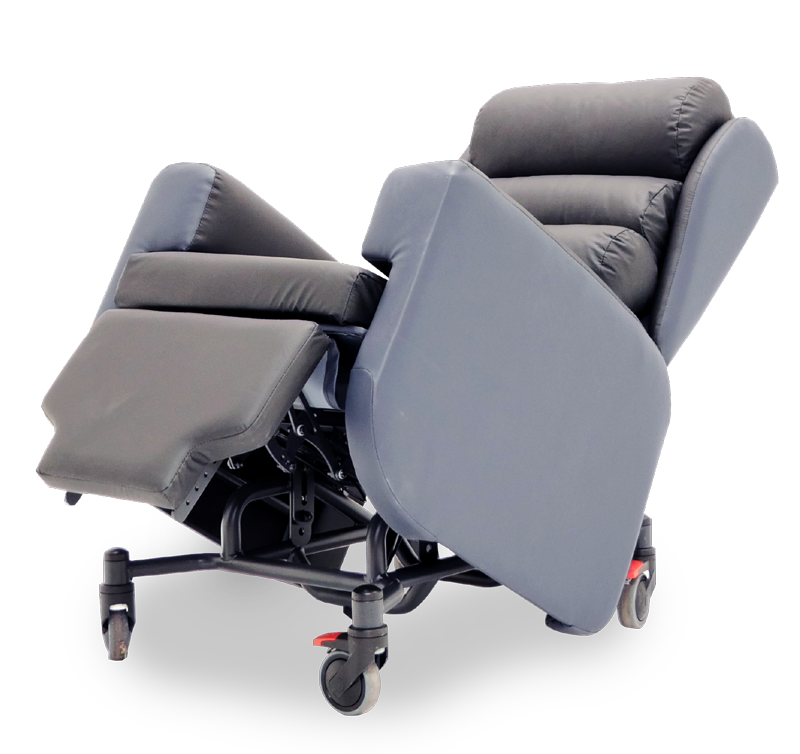
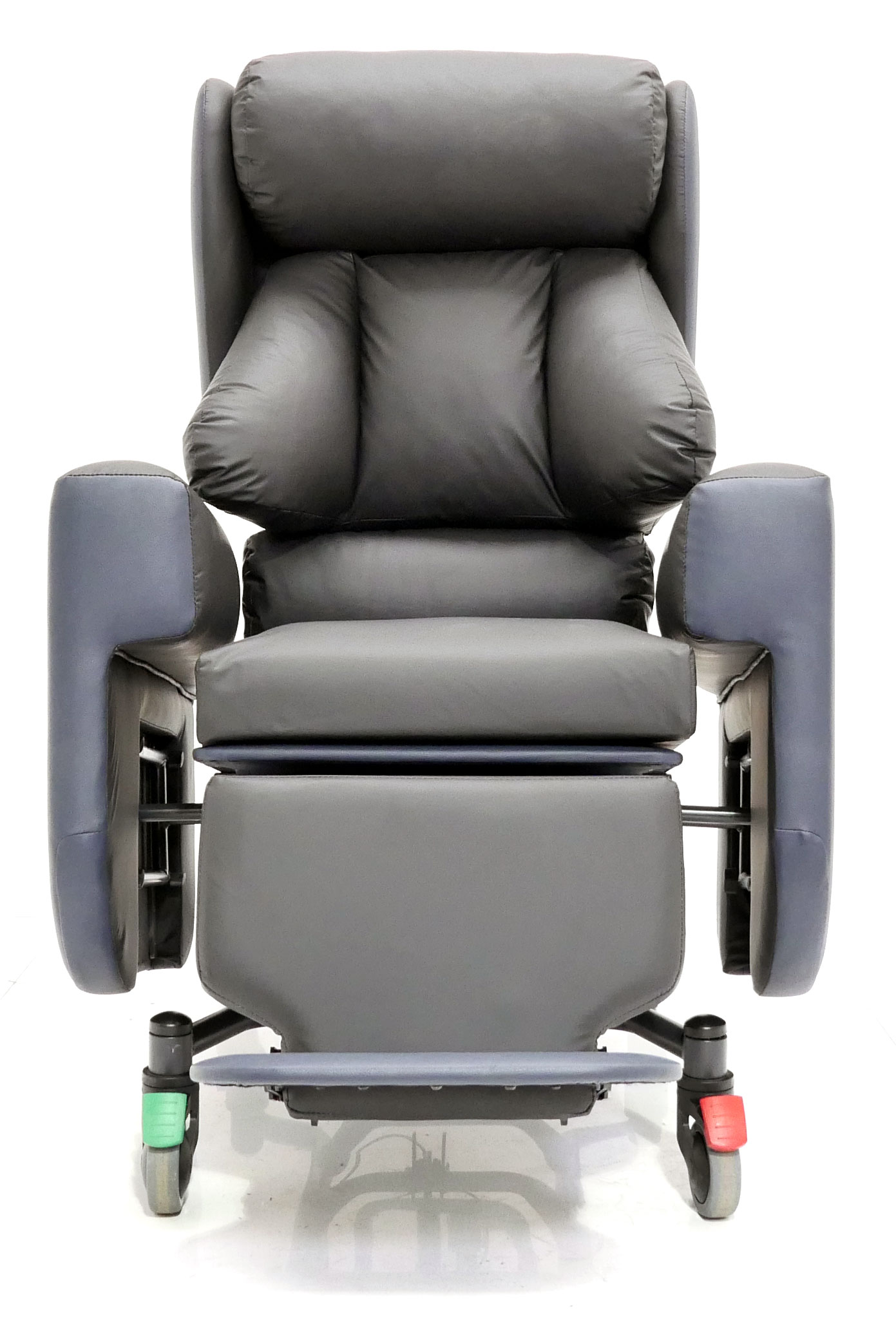
Achieving the correct seat height for the user allows the feet to be positioned firmly on the floor or footboard to ensure even weight distribution and assist the ambulant user to stand from the Tri-Chair more readily. Ensuring the correct seat height also avoids any susceptibility to pressure build up on the back of the thighs or the user “perching” on the chair.
An excessively high sitting position with legs swinging can lead to veins and nerves becoming blocked causing varicose veins, sleeping legs and numbness whereas an excessively low seat with an acute angle between the torso and upper legs can give rise to intestinal problems. The Tri-Chair’s functionality enables easy adjustment to suit each individual.
The ability of the Tri-Chair to be able to adjust its seat depth to each individual in multi-user environments or in situations where the chair may be recycled and reissued to another user is beneficial to reduce the occurrence of pressure issues.
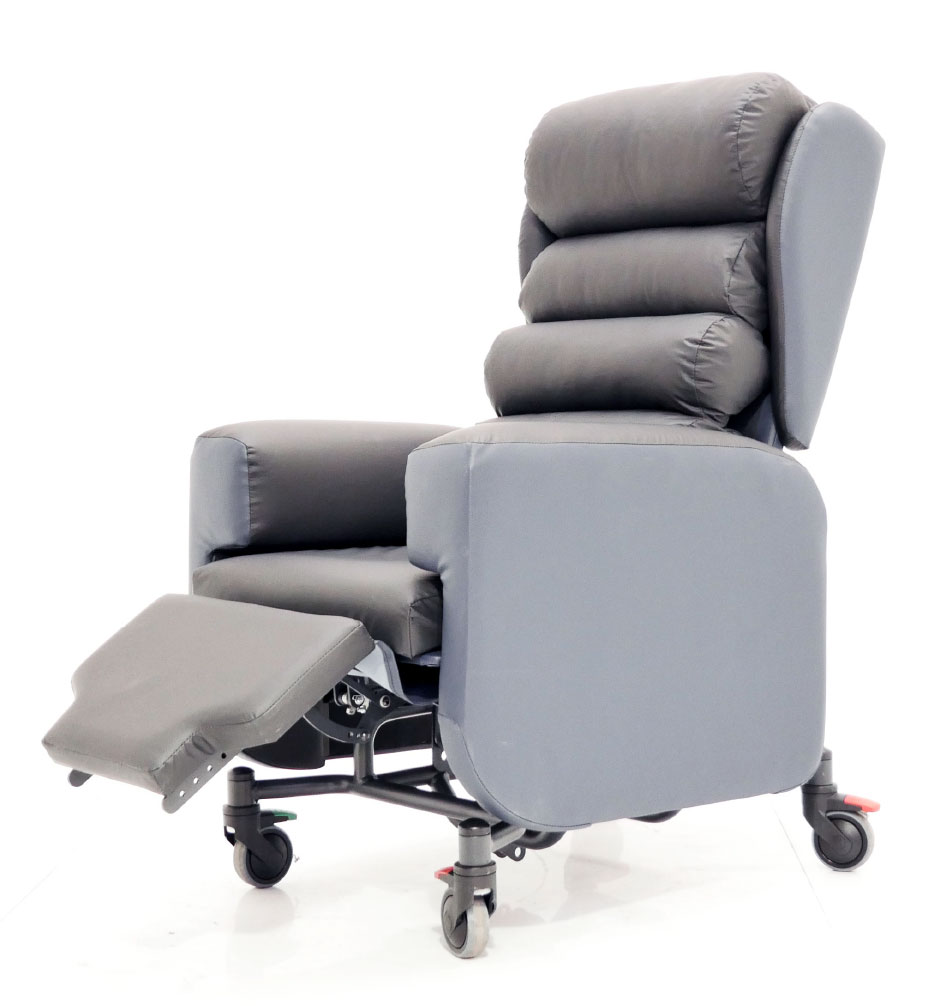
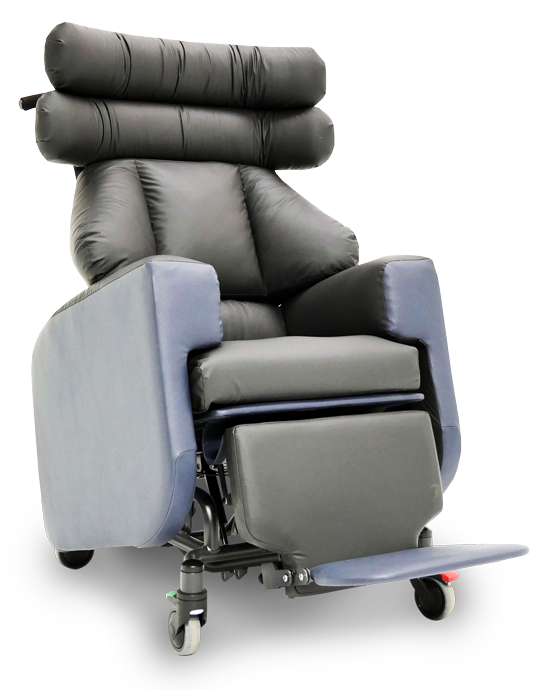
Integrated pressure care within the Tri-chair can help prevent and minimise pressure damage. Having the pressure cushion integral to the seat module of the chair prevents having a loose cushion on the top of an existing seat module. Loose pressure cushions have the potential to slip and slide, get lost, as well as affect the chair dimensions (seat height and seat to arm height of the chair) thereby potentially increasing the pressure risk as well as postural stability. Appropriate pressure management can reduce pain, risk and ultimately the exorbitant cost of managing the rehabilitation of a pressure sore – prevention is far more cost effective than the cost of cure!
Fundamentally, the Tri-Chair provides each user with a tailored seating system for their individual needs, giving comfort, postural stability and pressure management. Tri-Chairs look to improve their occupant’s quality of life by enabling them to be seated out of bed, to interact as part of communal settings whilst their posture is correctly managed which in turn leads to improvements with breathing, digestion, circulation, eating and swallowing and achieving quality rest and relaxation.
Tri-Chairs are more than just good sitting!
